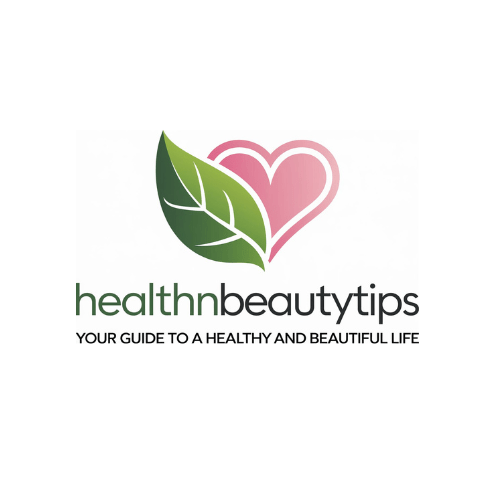Embrace Your Crown: Natural Hair Care Routines and Tips for Black Women
In the tapestry of human diversity, few threads are as rich, complex, and beautiful as the natural hair of Black women. Once maligned and misunderstood, natural hair has emerged from the shadows of societal pressure and chemical straighteners to take its rightful place in the spotlight. This resurgence isn’t just a trend; it’s a revolution—a reclamation of identity, heritage, and self-love. But with this embrace comes a labyrinth of information, techniques, and products that can leave even the most dedicated naturalista’s head spinning. Fear not, for we’re about to embark on a journey through the lush, coily landscape of natural hair care, arming you with the knowledge to nurture your crown in all its glory.
The Anatomy of Natural Hair: Understanding Your Unique Texture
Before we dive into the nitty-gritty of care routines, let’s take a moment to appreciate the marvel that is natural Black hair. Unlike other hair types, which are often round or oval in cross-section, Black hair is typically flat or ribbon-like. This unique structure contributes to its tendency to curl and coil, creating a vast spectrum of textures from loose waves to tight coils.
But here’s where it gets interesting: no two heads of natural hair are exactly alike. Your crown might be a mosaic of different textures, with looser curls at the nape and tighter coils at the crown. This diversity is part of what makes natural hair so beautiful—and so challenging to care for. Understanding your specific hair type (or types) is the first step in crafting a care routine that works for you.
The Holy Grail of Natural Hair Care: Moisture, Moisture, Moisture
If there’s one mantra that every natural hair enthusiast should tattoo on their heart, it’s this: moisture is king (or queen, in this case). The unique structure of Black hair makes it particularly prone to dryness. Those beautiful coils and kinks that give your hair its character also make it difficult for the natural oils produced by your scalp to travel down the hair shaft. The result? Hair that’s often thirsty for hydration.
But fear not! This is where the art of moisturizing comes into play. Here are some techniques to keep your tresses quenched:
- The LOC/LCO Method: A Moisture-Locking Trifecta
This method involves layering products in a specific order to maximize moisture retention. The acronym stands for Liquid, Oil, and Cream (or Cream, Oil for LCO). Start with a water-based leave-in conditioner, follow with a natural oil like jojoba or argan, and seal it all in with a thick cream or butter. Experiment with both orders to see which works best for your hair.
- Deep Conditioning: The Weekly Reset
Think of deep conditioning as a spa day for your hair. Once a week, treat your strands to a nourishing mask rich in proteins and moisturizing agents. For an extra boost, apply heat (via a hooded dryer or steam cap) to help the product penetrate deeper into the hair shaft.
- The Greenhouse Effect: Overnight Moisture Magic
This technique involves applying a moisturizing product to your hair, covering it with a shower cap or plastic bag, and letting your body heat do the work overnight. It’s like creating a mini-sauna for your hair, allowing it to absorb moisture deeply.
Detangling: The Art of Gentle Persuasion
Ah, detangling—the task that can make even the most patient naturalista want to throw in the towel. But fear not! With the right techniques and tools, you can turn this dreaded chore into a meditative practice of self-care.
- Finger Detangling: The Gentlest Approach
Your fingers are your best tools for detangling. They allow you to feel knots and gently work through them without causing unnecessary breakage. Start from the ends and work your way up, using a slippery conditioner for lubrication.
- Wide-Tooth Combs: When You Need Backup
If finger detangling isn’t cutting it, reach for a wide-tooth comb. The wider the teeth, the less likely you are to cause breakage. Again, start from the ends and work your way up in small sections.
- Denman Brush: The Curl-Defining Detangler
For those looking to define their curl pattern while detangling, the Denman brush has become a cult favorite. Its rows of nylon pins can help separate and define curls while gently removing tangles.
Protective Styling: Guarding Your Crown
Protective styles are the secret weapon in many a natural hair care arsenal. These styles, which keep the ends of your hair tucked away, can help prevent breakage and retain length. But beware—not all protective styles are created equal.
- Twists and Braids: Classic Protection
These versatile styles can be worn for weeks at a time, giving your hair a break from daily manipulation. Just remember to moisturize regularly and avoid making them too tight, which can lead to tension and breakage.
- Bantu Knots: A Dual-Purpose Style
Not only do Bantu knots protect your hair while you sleep, but they also create gorgeous curl definition when unraveled. It’s like getting two styles in one!
- Wigs and Weaves: The Ultimate Shield
For those looking for maximum protection (or just a change of pace), wigs and weaves can be excellent options. Just ensure your natural hair is properly moisturized and braided underneath to prevent matting.
The Product Junkie’s Dilemma: Navigating the Sea of Hair Care Products
In the world of natural hair care, the sheer volume of products available can be overwhelming. From leave-in conditioners to styling creams, curl definers to edge controls, it’s easy to fall into the trap of buying everything on the shelf. But here’s a secret: less is often more.
- Know Your Ingredients
Instead of getting caught up in marketing hype, learn to read ingredient labels. Look for moisturizing agents like aloe vera, glycerin, and natural oils. Avoid harsh sulfates and drying alcohols.
- The Cocktailing Method
Sometimes, the perfect product doesn’t exist—so create it yourself! Experiment with mixing different products to create a custom blend that’s perfect for your hair.
- Listen to Your Hair
Your hair will tell you what it needs if you pay attention. Does it feel dry and brittle? It might need more moisture. Limp and greasy? You might be over-moisturizing. Adjust your routine accordingly.
Conclusion: Crowning Glory
Embracing your natural hair is more than just a beauty choice—it’s a radical act of self-love and cultural pride. The journey to healthy, thriving natural hair is not always easy, but it is infinitely rewarding. As you navigate the twists and turns of your natural hair journey, remember that your crown is unique. What works for someone else may not work for you, and that’s okay.
The key is to approach your hair care routine with patience, curiosity, and a willingness to experiment. Don’t be afraid to try new techniques, but also listen to your hair and give it what it needs. With time and care, you’ll develop a routine that allows your natural beauty to shine in all its glory.
So go forth, embrace your crown, and wear it proudly. Your natural hair is not just beautiful—it’s a testament to the resilience, creativity, and diversity of Black women everywhere. Let it be a source of strength, inspiration, and joy as you navigate the world, head held high, curls bouncing freely in the wind.
FAQ: Nurturing Your Natural Crown
Q: How often should I wash my natural hair?
A: There’s no one-size-fits-all answer, but many naturals find that washing every 1-2 weeks works well. Listen to your hair—if it feels dirty or greasy, it’s time for a wash.
Q: Is heat styling off-limits for natural hair?
A: Not necessarily, but it should be done sparingly and with proper heat protectants. Excessive heat can damage your curl pattern over time.
Q: My hair seems to have stopped growing. What can I do?
A: Hair typically grows about 1/2 inch per month. If you’re not seeing length retention, focus on preventing breakage through moisturizing and protective styling.
Q: Should I trim my own hair or go to a professional?
A: While some naturals master the art of self-trimming, it’s often best to visit a professional who specializes in natural hair, especially for major cuts or shape-ups.
Q: How can I prevent shrinkage?
A: While some shrinkage is natural and healthy, you can minimize it by using stretching techniques like banding, twist-outs, or blow-drying on low heat.
Q: Is it necessary to use products specifically marketed for natural hair?
A: Not always. The key is to understand your hair’s needs and the product’s ingredients, regardless of marketing. Some naturals swear by “regular” products that work well for their hair.
Q: How do I maintain my hair routine when traveling?
A: Simplify your routine and use travel-sized containers. Consider protective styles for longer trips, and always pack a satin pillowcase or bonnet.
Q: Can diet affect my natural hair health?
A: Absolutely! A balanced diet rich in proteins, healthy fats, and vitamins (especially biotin and vitamins A, C, and E) can contribute to healthier hair growth.











